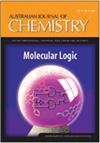酶催化交联酪胺修饰明胶的可注射水凝胶
IF 0.9
4区 化学
Q4 CHEMISTRY, MULTIDISCIPLINARY
引用次数: 0
摘要
酶催化交联是一种水凝胶制备方法,通常被认为比传统的化学交联方法具有更低的细胞毒性。为了优化可注射水凝胶的性能,扩大其应用范围,设计了酶催化交联可注射水凝胶。在辣根过氧化物酶(HRP)和过氧化氢(H2O2)的催化作用下,将酪胺改性明胶(G-T)制备成稳定的可注射水凝胶。用核磁共振氢谱法证实了酪胺对明胶的成功改性。利用原子力显微镜(AFM)和扫描电镜(SEM)对制备的水凝胶的表面形貌进行了表征。流变学试验表明,水凝胶具有可调节的机械强度、地层动力学、剪切减薄和良好的自恢复性能。此外,水凝胶可以通过注射形成各种形状。水凝胶网状结构复杂,相互交织,适于包封药物以实现控释。水凝胶的药物释放符合Peppas-Sahlin模型,属于Fickian扩散。本研究通过酶催化改性明胶交联制备可注射水凝胶,并将其用于药物释放,有望扩大其在生物医学领域的应用。本文章由计算机程序翻译,如有差异,请以英文原文为准。
Injectable hydrogels of enzyme-catalyzed cross-linked tyramine-modified gelatin for drug delivery
Enzymatically catalyzed cross-linking is a hydrogel fabrication method that generally is considered to have lower cytotoxicity than traditional chemical cross-linking methods. In order to optimize the properties of injectable hydrogels and expand their applications, an enzyme-catalyzed cross-linked injectable hydrogel was designed. The tyramine-modified gelatin (G-T) was formed into a stable injectable hydrogel by the combination of horseradish peroxidase (HRP) and hydrogen peroxide (H2O2) catalysis. 1H NMR spectroscopy was used to demonstrate the successful modification of gelatin by tyramine. The surface morphology of the prepared hydrogels was characterized jointly by atomic force microscopy (AFM) and scanning electron microscopy (SEM). Rheological tests demonstrated the tunable mechanical strength, formation kinetics, shear thinning and good self-recovery properties of the hydrogels. In addition, the hydrogels can be formed into various shapes by injection. The hydrogel network structure is complex and interlaced, as such it is suitable to encapsulate drugs for controlled release. The drug release from the prepared hydrogels followed the Peppas–Sahlin model and belonged to Fickian diffusion. This study constructed injectable hydrogels through the enzyme-catalyzed cross-linking of modified gelatin and applied the hydrogels for drug release, which is expected to expand the application in biomedical fields.
求助全文
通过发布文献求助,成功后即可免费获取论文全文。
去求助
来源期刊

Australian Journal of Chemistry
化学-化学综合
CiteScore
2.50
自引率
0.00%
发文量
65
审稿时长
1.3 months
期刊介绍:
Australian Journal of Chemistry - an International Journal for Chemical Science publishes research papers from all fields of chemical science. Papers that are multidisciplinary or address new or emerging areas of chemistry are particularly encouraged. Thus, the scope is dynamic. It includes (but is not limited to) synthesis, structure, new materials, macromolecules and polymers, supramolecular chemistry, analytical and environmental chemistry, natural products, biological and medicinal chemistry, nanotechnology, and surface chemistry.
Australian Journal of Chemistry is published with the endorsement of the Commonwealth Scientific and Industrial Research Organisation (CSIRO) and the Australian Academy of Science.
 求助内容:
求助内容: 应助结果提醒方式:
应助结果提醒方式:


